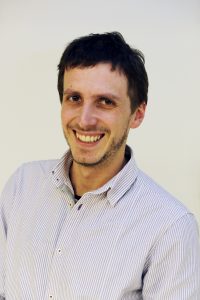15.3. 2018 kl. 15:30-16:30 Stofu K206 í Aðalbyggingu Menntavísindasviðs v/Stakkahlíð
Útsending verður einnig í https://c.deic.dk/rannum
Designing for making across kindergarten and science museum: Tensions and opportunities
Fræðimennirnir Alfredo Jornet og Ole Smørdal við Háskólann í Osló eru staddir hér á landi í tengslum við Evrópuverkefnið MakEY – makerspaces in the early years. Þeir munu halda erindi um tilviksrannsókn í Noregi sem þeir hafa skipulagt í tengslum við verkefnið og er um nýsköpunarsmiðjur í vísindasöfnum og hvernig má nýta þær í menntun ungra barna. Hér fyrir neðan er nánari lýsing.
Makerspaces are becoming common in science centers and museums targeting youth and adults, but little is known about how these spaces might be designed for supporting younger children’s creativity and knowledge. In this presentation, we report on design-based research involving the university, a science and technology museum, and a kindergarten in Norway, who collaborate to develop and test design concepts for makerspaces targeting 5-6 years old children. The research comprises several phases, including initial ethnographic observations of children playing at their kindergarten and during existing activities at the museum. These observations become input to design workshops in which the goal is to develo a makerspace activity suitable for but also taking an innovative approach to the needs and motivations of early years education. Using a sociocultural approach, we identify design concepts and analyze the different ways in which the socio-material conditions surrounding the design and implementation of the pilot activity support and/or hinder opportunities for learning and creativity. Preliminary findings suggest the prevalence of cultural and historical tensions between the need to provide structure and constraint to facilitate young learner’s participation, and the goal of supporting freedom and creativity. Findings also suggest the importance of developing maker projects spanning across the kindergarten and the science museum, rather than being limited to the latter, and the importance of considering how strong and weak framing approaches structure opportunities for engaging in creative making.


